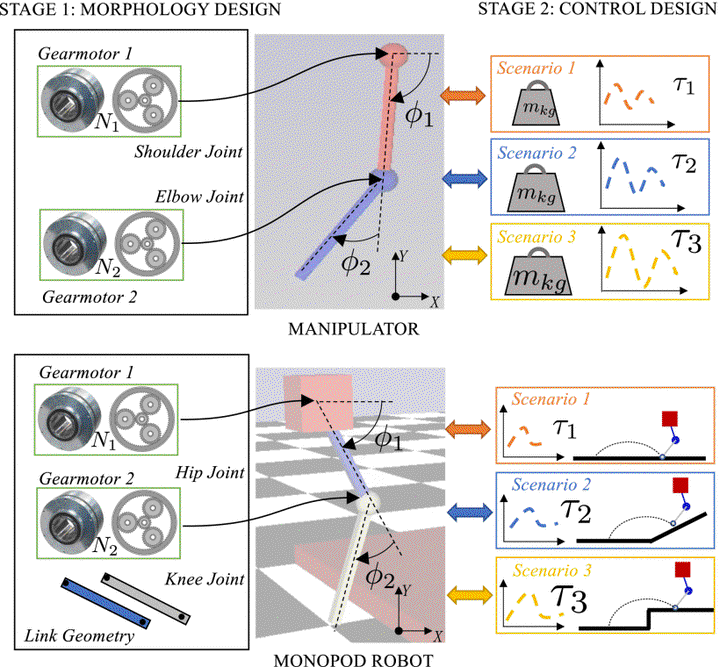
Abstract
Versatility is one of the main factors driving the adoption of robots on the assembly line and in other applications. Compared to fixed-automation solutions, a single industrial robot can perform a wide range of tasks (e.g., welding, lifting). In other platforms, such as legged robots, versatility is a necessity to negotiate varied terrains. The ability to balance performance across these anticipated scenarios is one of the main challenges to the process of design. To address this challenge, this letter proposes a new framework for the computational design of versatile robots by considering the interplay between mechanical design and control across multiple tasks and environments. The proposed method optimizes morphology parameters while simultaneously adjusting control parameters using trajectory optimization (TO) so that a single design can fulfill multiple tasks. As its main contribution, the letter details an approach to combine methods from stochastic programming (SP) with TO to address the scalability of these multi-task co-design problems. To assess the effects of this contribution, this letter considers the problems of designing a planar manipulator to transport a range of loads and a hopping monopod robot that must jump across a variety of terrains. The proposed formulation achieves faster solution times and improved scalability in comparison to state of the art co-design solutions. The resulting designs are also shown to be more versatile in terms of providing improved energy cost and task completion times across multiple scenarios.